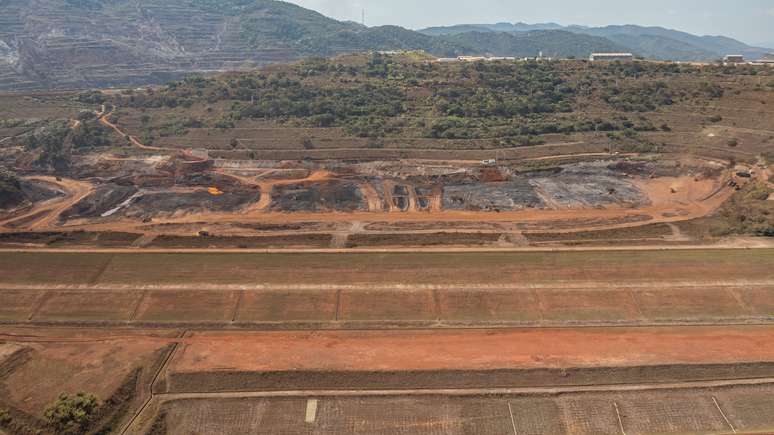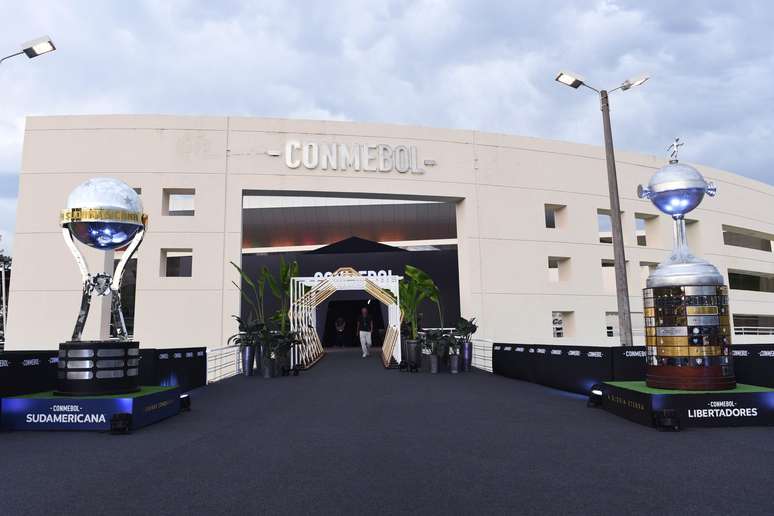The reduction from 3 to 2 in the emergency level is due to new geotechnical investigations and the expansion of monitoring tools
The Sul Superior dam, located in the Gongo Soco mine, in Barão de Cocais (MG), which was at the highest emergency level, has seen its level reduced from 3 to level 2 in the Integrated Mining Dam Management System (SIGBM) of the National Mining Agency (ANM), in August.
The reduction was possible thanks to the implementation of new geotechnical investigations, the expansion of monitoring tools and the evolution of studies which allowed greater knowledge of the real stability conditions of the structure, which contributed to increasing the safety of the structure.
To date, approximately 900,000 cubic meters have been removed, which corresponds to approximately 13% of the total to be removed, in addition to improving the surface drainage of the reservoir and reducing the water supply to the dam.
Interestingly, work to remove tailings from the Sul Superior basin is proceeding with the use of remotely operated equipment, that is, machines such as tractors and excavators are operated remotely.
“All work is possible thanks to the development of innovative technologies. Equipment that allows remote surveying was used in an unprecedented way, the deep drive, imported from the Netherlands, which allowed remote geotechnical investigations to be carried out, guaranteeing the safety of the workers involved”, explains Adriana Bandeira, director of Decharacterization of Dams and Geotechnical Projects.
In 2019, the Sul Superior dam entered the maximum emergency level with the main objective of ensuring the safety of the community near the structure. Progress has since been made towards a greater technical understanding of the dam and all efforts have been made to eliminate the structure. New geotechnical investigations were developed, the number of dam monitoring vehicles increased by over 50% – from 72 to 109, the construction of a local Geotechnical Monitoring Center at the Gongo Soco mine and new topographic surveys. Approximately R$ 80 million were invested in studies and analyzes on the stability conditions of the structure.
Completion of the works is expected in December 2029, with the total removal of waste and the environmental recovery of the area. The dam is equipped with a downstream containment structure (ECJ) with a Declaration of Stability Condition (DCE) in place and capable of, in the event of a possible failure, retaining all waste from the dam.
The reduction of the emergency level of the Sul Superior dam was carried out by the National Mining Agency (ANM), and communicated to the competent bodies, in compliance with the guidelines established in the structure’s Mining Dam Emergency Action Plan (PAEBM) and the current legislation, including the Public Ministry of Minas Gerais (MPMG) and the technical audit that monitors the work of the structure.
Dam characterization, management and safety
The elimination of structures built upstream is a commitment made by Vale shortly after the collapse of the B1 dam, in Brumadinho, in addition to complying with current federal and state legislation on dam safety. Since 2019, Vale has invested more than R$9 billion in the upstream facilities decharacterization program.
All of Vale’s upstream facilities in Brazil are idle and are monitored 24 hours a day by the company’s Geotechnical Monitoring Centers (CMG). Disposal solutions are customized for each facility and are implemented with caution, always prioritizing people’s safety, risk reduction and care for the environment.
The actions implemented for decharacterization are subject to continuous evaluation and monitoring by independent technical teams, as well as by the relevant regulatory bodies.
Of the 30 structures foreseen by the Program, 15 have already been eliminated and the goal is to have no structure at the maximum emergency level by 2025.
Additionally, Vale has signed up to the Global Industry Standard for Tailings Management (GISTM), which aims to ensure zero harm to people or the environment around dams during the entire life cycle, from design to closure. Launched in 2020, on the initiative of the United Nations Environment Program (UNEP), the Principles for Responsible Investment (PRI) and the International Council on Mining and Metals (ICMM), it was the first global standard in the mining sector and a global benchmark for dam safety.
Information about Vale Dam management is available at www.vale.com/barragem.
Evacuated families and repair actions
Despite the improvement in the stability conditions of the Sul Superior dam, the Self-Rescue Area (ZAS) of the structure, at emergency level 2, must remain evacuated according to current legislation, without the return of families at this time.
Families who had to preventively leave their homes after the facility’s emergency level was raised, and who have not completed the compensation process, will remain in temporary accommodation, with fixed costs covered by Vale, until the renovation works are completed. dismantling of the dam.
As the decharacterization work progresses, actions to repair and strengthen municipal public services run parallel, as a way to offset impacts caused to the local community. In this sense, Vale signed, in August 2023, an agreement worth R$527 million for remediation and compensation actions in the Municipality of Barão de Cocais. The agreement includes programs related to income transfer, tourism and cultural redevelopment, security, strengthening municipal public services and requests from affected communities.
Source: Terra
Rose James is a Gossipify movie and series reviewer known for her in-depth analysis and unique perspective on the latest releases. With a background in film studies, she provides engaging and informative reviews, and keeps readers up to date with industry trends and emerging talents.








